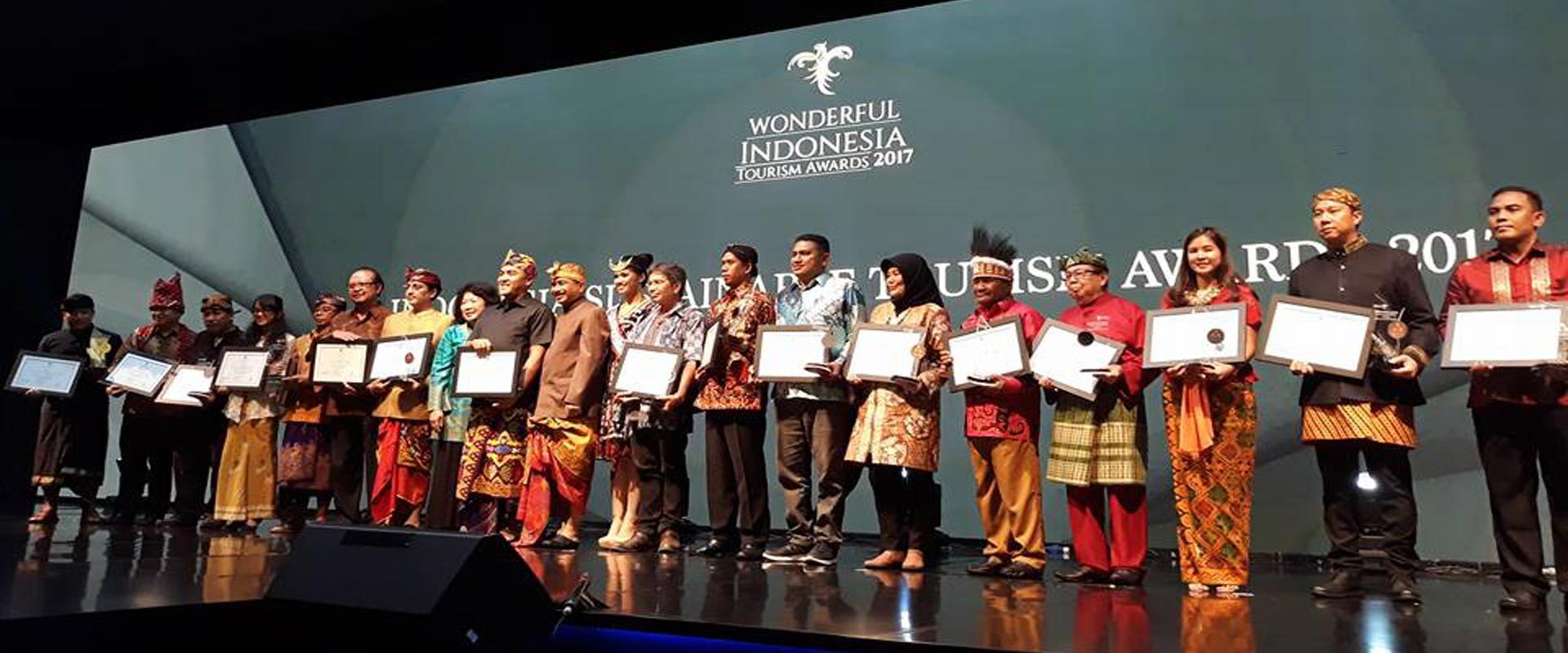ARBOREK Village Wins the 2017 ISTA (Indonesia Sustainable Tourism Award) by Nikka Amandra Gunadharma
ARBOREK Village Wins the 2017 ISTA (Indonesia Sustainable Tourism Award): Towards the future of Sustainable Tourism in Raja Ampat
by Nikka Amandra Gunadharma with Meidiarti Kasmidi
Raja Ampat’s Arborek Village, located in the Meos Mansar District, was recently honored with Green Award in the category of “Economic Utility for Local Community” in the Indonesia Sustainable Tourism Award (ISTA) 2017 –a program from the Indonesia Ministry of Tourism.
All the nominees for the ISTA 2017 have been through strict selection and assessment process based on the criteria as designated under the Ministry of Tourism Decree No. 14 of the Year 2014 on Guidelines of Sustainable Tourism Destination; an adoption from the standards set by the International Global Sustainable Tourism Council (IGSTC), an independent organization acknowledged by the United Nation’s World Tourism Organization (UNWTO).
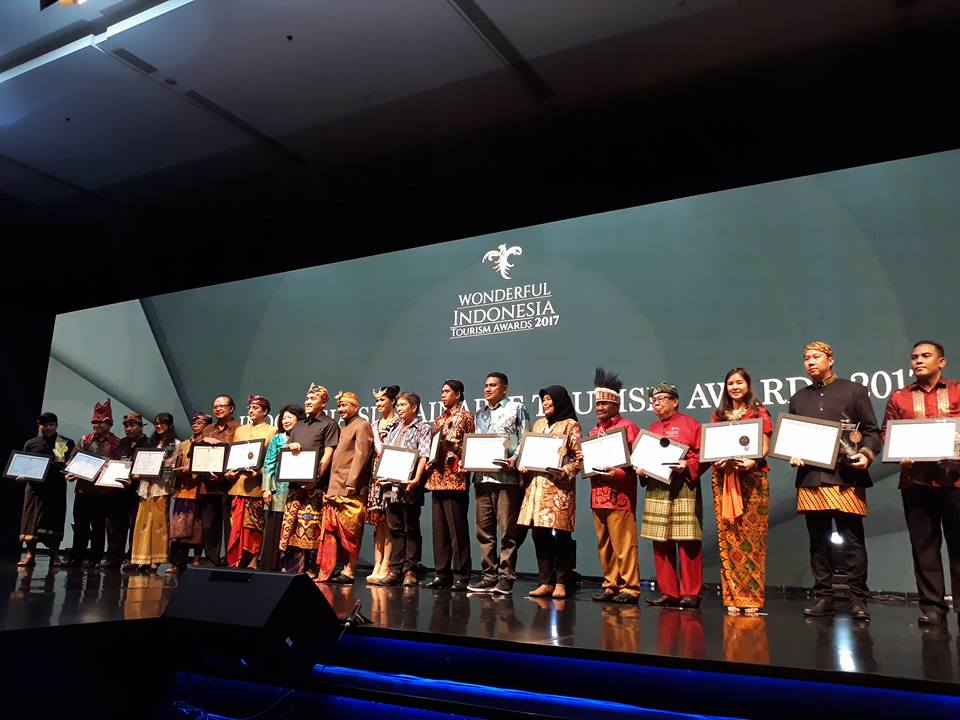
Award winners in “Wonderful Indonesia Tourism Awards 2017.” (Photo by: Githa Anathasia/2017)
There were 96 nominees from 23 provinces in Indonesia subsequent to the closing of registration period, and Arborek was one from the eastern part of the Country receiving the honor in this inaugural event. During the Awarding Ceremony titled “Wonderful Indonesia Tourism Awards 2017,” the chief of Arborek Village, Daud Mambrasar, expressed his affection, “I am both happy and thrilled for Arborek to receive this honor; as I am also proud (for Arborek) to be able to represent Raja Ampat (and) West Papua for ISTA 2017.”
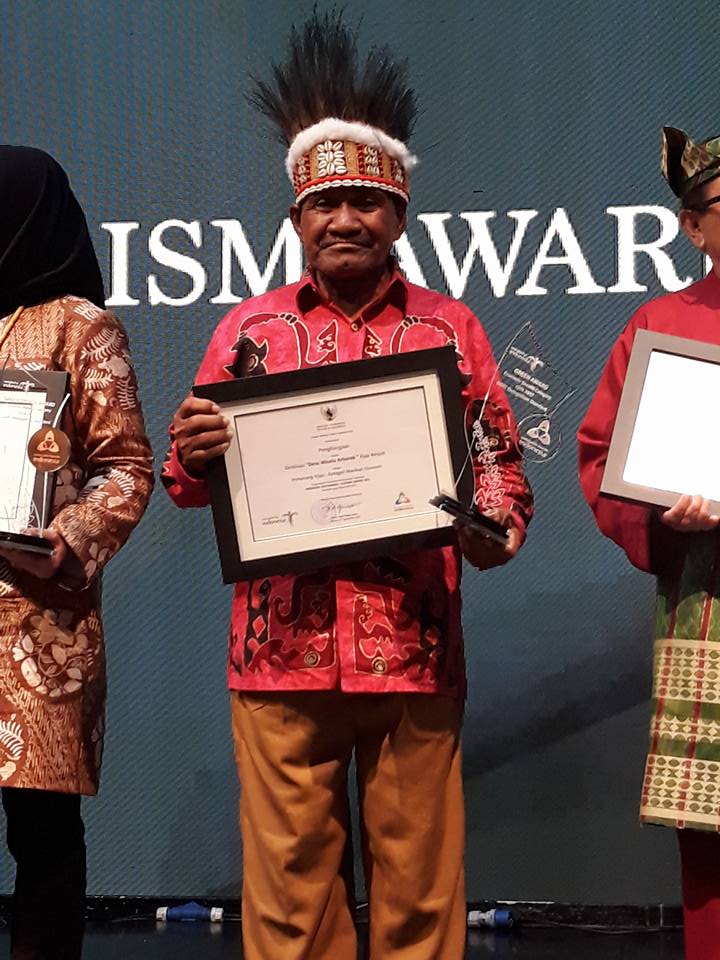
Mr. Daud Mambrasar proudly present the award received by Arborek Village in the Indonesia Sustainable Tourism Award 2017. (Photo by: Githa Anathasia/2017)
“I am thankful for several Institutions and all the people who have helped and assisted us all these years and to all the villagers in Arborek who worked together to protect and preserve our Village. This is our award; we earned this for the collaboration of all the people in the Village. We started by protecting our environment, and now we are reaping economic benefits from what we’ve been protecting all along; tourists visit (our Village) so that we’re be able to generate benefits from homestays, stalls, local guides, souvenirs, etc.,” continued Daud Mambrasar enthusiastically.
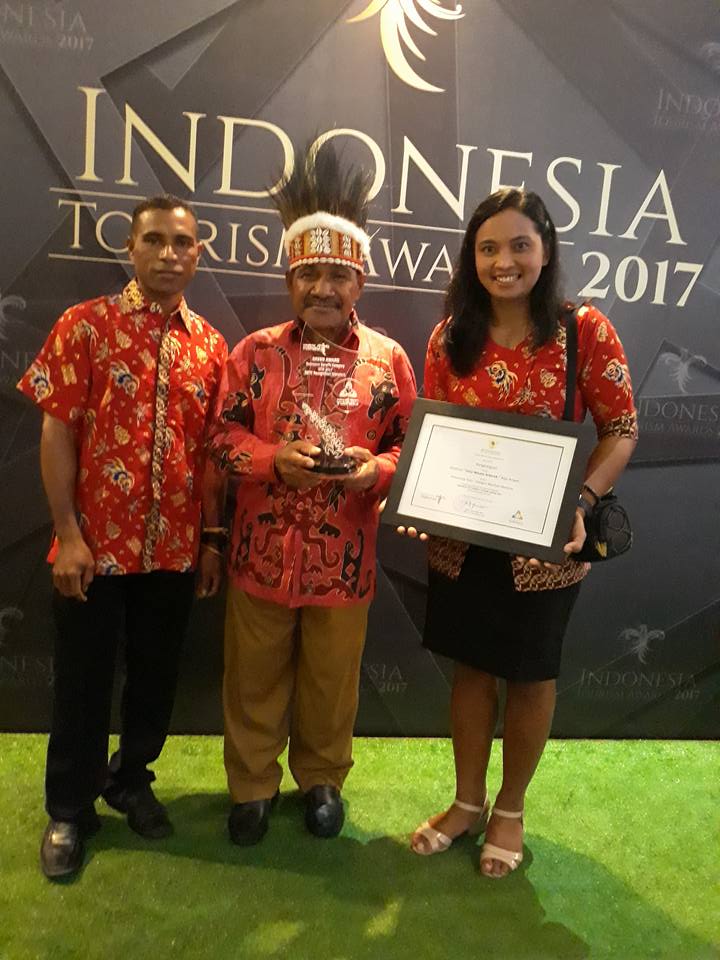
The Chief of Arborek Village, Mr. Daud Mambrasar, flanked by two fellow Villagers who accompanied him during the awarding night; Marcel Mambrasar and Githa Anasthasia. (Photo Credit of: Githa Anasthasia/2017)
Upon answering question about the significance of this award for the people in Arborek Village, Daud Mambrasar added, “For us, the community in Arborek, this Award is very meaningful and will encourage us to do much better in the future, so that tourism in Arborek will not only contribute to our community’s prosperity, but also preserve our culture and environment sustainably.”
Arborek is a village with a population of less than 300 people located within the Dampier Strait Marine Protected Area (MPA). It is one of the villages that has successfully developed collaborative participation through environmental conservation and preservation efforts over the past few years, as solid responses towards Raja Ampat’s blooming tourism.
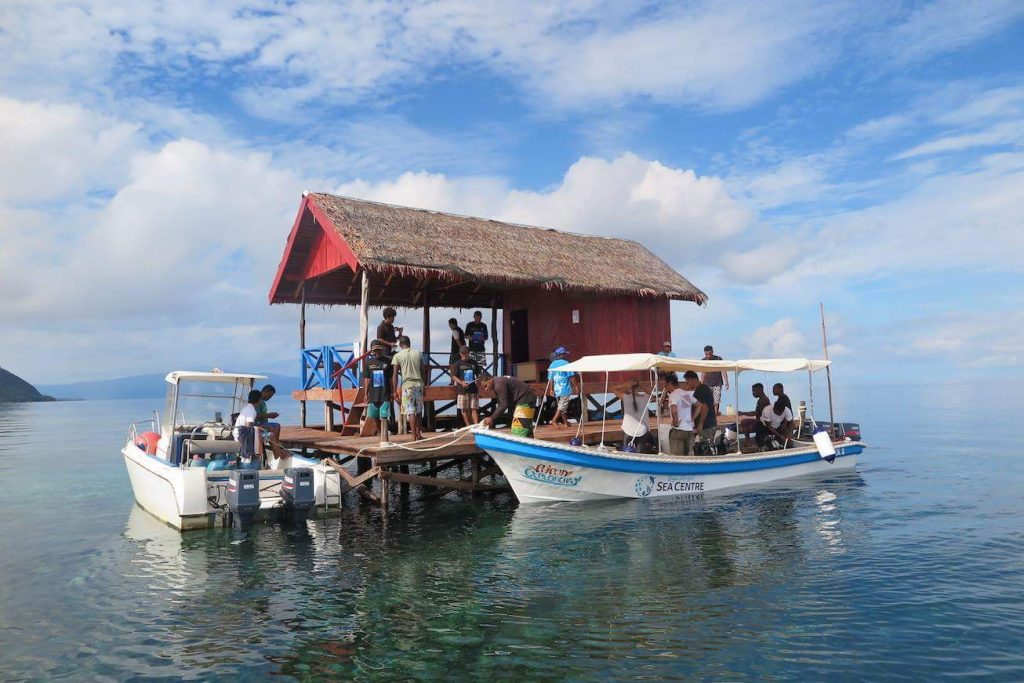
Manta Sandy’s Monitoring Post nearby Arborek water; one of the community-based manifestations in managing tourism –especially Manta Ray’s attraction, in collaboration with the Regency Government, tour operators, tour guides, and NGOs. (Photo by: Arnaud Brival-Raja Ampat SEA Centre/2017)
As a Village located within a conservation area, Arborek consistently puts effort into developing and implementing a concept of tourism-driven, village managed principles of environmentally-friendly sustainability. This foundation relies on the active participation of all members of its community, and the collaboration with various parties; from the Regency Government through its related agencies, the private sector, and several non-governmental organization such as Conservation International (CI) Indonesia, Raja Ampat SEA Centre, Marine Mega Fauna Foundation, etc.
On a separate occasion the Head of Raja Ampat’s Tourism Agency, Yusdi N. Lamatenggo, S.Pi, M.Si., explained, “This award is not only an acknowledgement from external parties towards the community in the Arborek Village (who consistently) practices local wisdom through generations, but also on how they manage to keep the balance between economic (activities) and environmental preservation.”
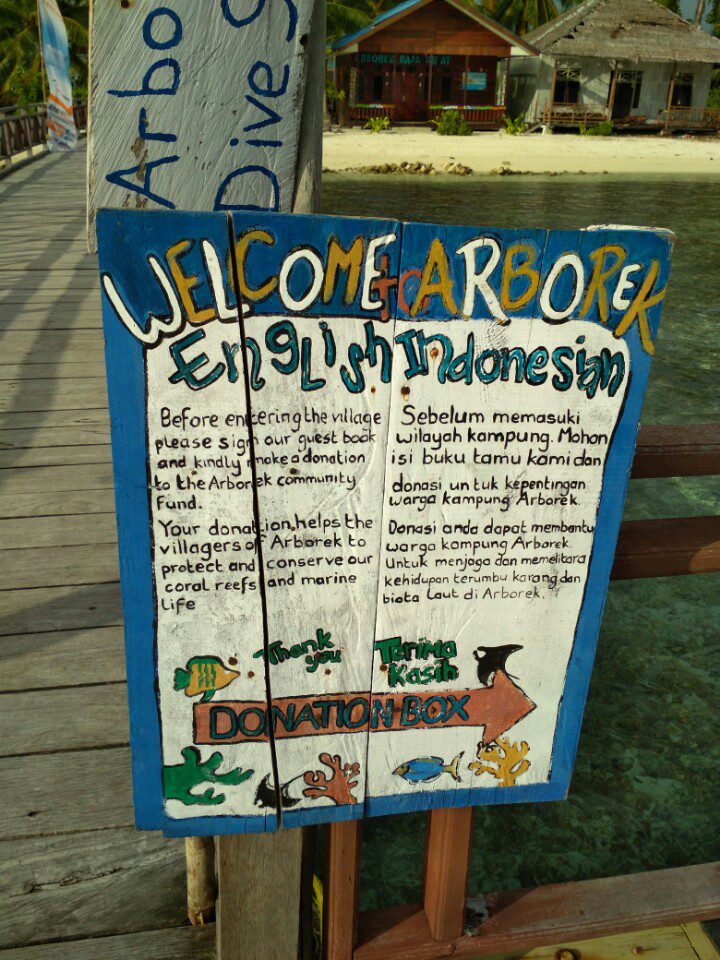
As part of the efforts towards sustainable tourism, these signboards are easily spotted in strategic locations around Arborek. (Photo by: Githa Anasthasia/2017)
When asked about the meaning of the honor received by Arborek in the context of tourism development in Raja Ampat, Yusdi N. Lamatenggo, added, “With this Award, we hope that all the people in Arborek (and Raja Ampat as well) will be encouraged and even more committed in developing tourism based on the principles of sustainability.”
It is a fact that tourism is likely to generate a considerable benefit for the local communities, but when manage inappropriately: it’s also possible to create an equally extensive ‘disaster.’ Just like other destinations in Indonesia –which are primarily ‘dependent’ on the preservation of natural resources as their primary ‘asset,’ the development of tourism creates complex challenges that requires comprehensive solutions. Even Arborek could not escape from such inevitability.
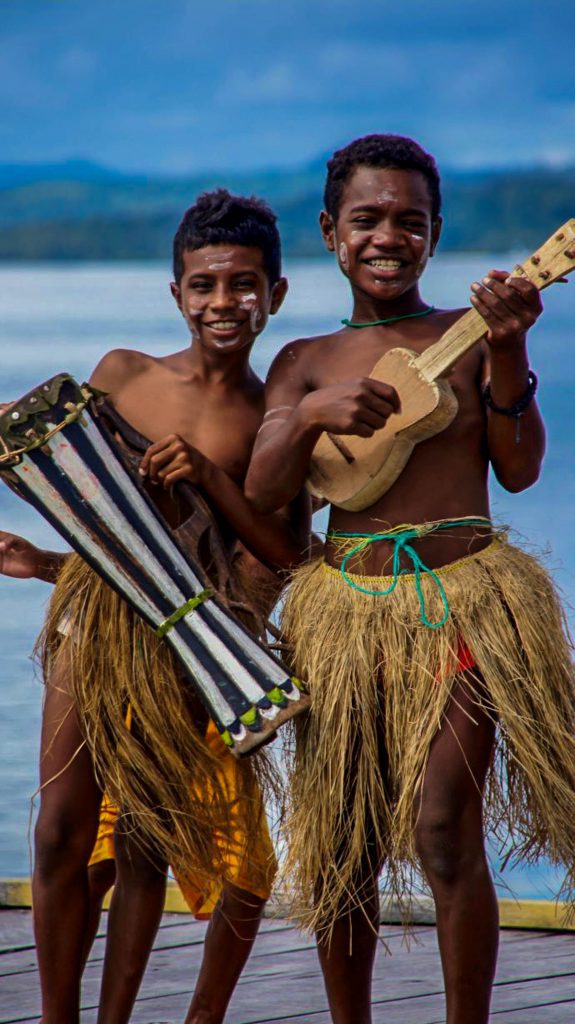
Two boys of Arborek wearing traditional outfit. These authentic, attire are commonly wear during important, Village-related celebrations; it also serves as an identity for the Arboreks. (Photo by: Githa Anasthasia/2017)
Responding to these challenges, the Head of Raja Ampat’s Tourism Agency explained –in general, the strategy developed by the Regency Government, with all the Stakeholders, was based on a study of Sustainable Tourism’s Carrying Capacity. Raja Ampat is intended to be developed as a world-class ecotourism destination; and not a mass tourism-based destination,” as he continued, “We also encourage the local communities to preserve their local wisdoms; with the hope that they will strengthen various regulations legislated by the Government.”
One of the results from the study titled “Carrying Capacity of Sustainable Tourism in Raja Ampat” shows that, the total number of visitors Raja Ampat could tolerate per year is no more than 91,275 tourists, based on 3 tours to various attractions per day. If these numbers are maintained, then tourism is considered tolerable for the environment: this is the definition of “sustainable tourism”. The Study is expected to be one of the key references for the government in legislating tourism-related regulations for Raja Ampat.
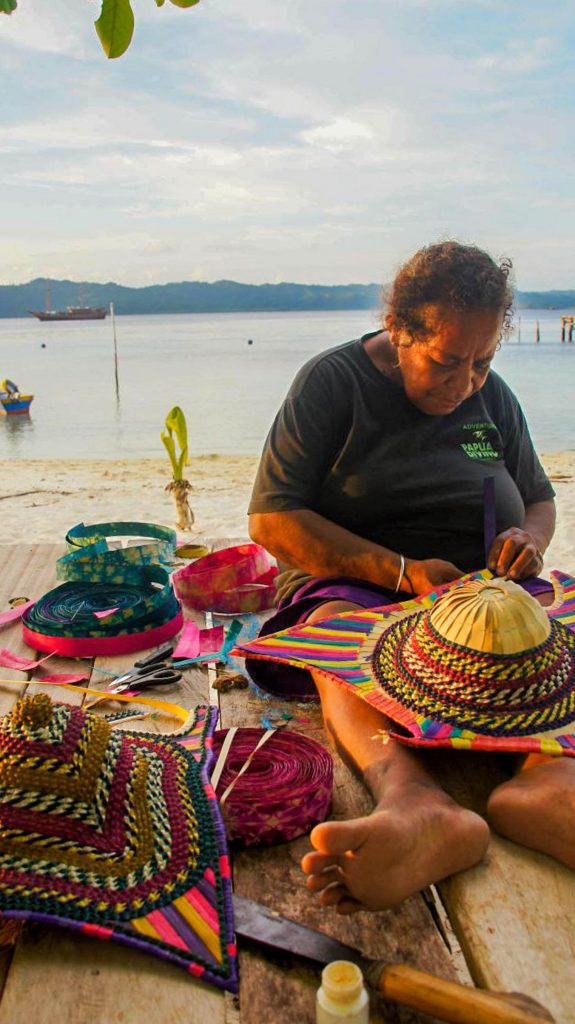
A lady in full concentration on her handicraft. This is one of Arborek’s unique souvenirs: Durian Hats. (Photo by: Githa Anasthasia/2017)
One of the researchers involved in the Study, Dr. Victor P.H. Nikijuluw, CI Indonesia’s Marine Program Director, affirmed that Arborek has abundant of potential to develop ecotourism due to its nature and human resources. “There’s no doubt about the natural beauty surrounding Arborek, but all these natural resources would be meaningless if the people are not prepared to properly manage and utilize them. Fortunately, the people in Arborek are keen to learn new things, which leads to their readiness to manage their Village as one of the centers of ecotourism in Raja Ampat. In the future, Arborek’s initiatives will provide a “model” for other coastal villages in Indonesia that wish to develop similar concepts.”
Although Arborek has yet to receive ISTA’s highest honor, the Green Platinum Award, its achievement should be appreciated and noted as valuable step in the learning process toward consistently developing and managing the principles of sustainability; which aims to generate as many benefits possible for all members of the community in the Village.
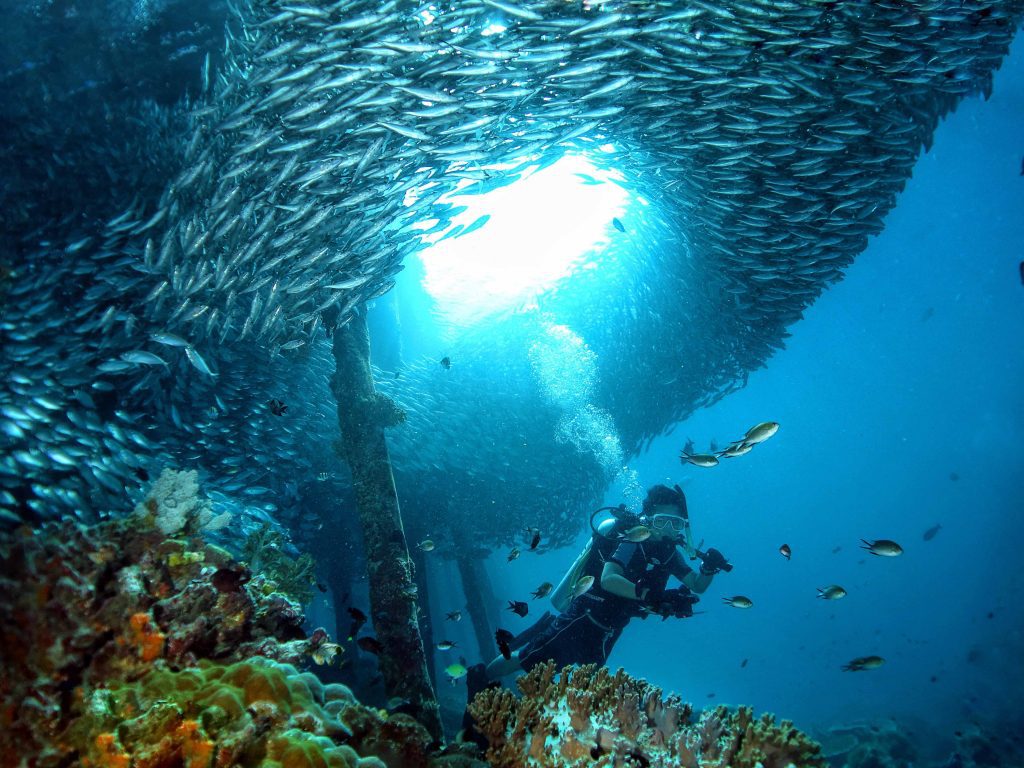
A rather ‘crowded’ day below the surface in Arborek: one of the parameters to determine the health of an ecosystem. (photo by: Awaloeddin Noer/2017)
Note: The Study on Carrying Capacity of Sustainable Tourism in Raja Ampat was a collaborative effort by Conservation International (CI) Indonesia, the University of Papua, University of Pattimura in Ambon, Balai Besar Konservasi Sumber Daya Alam Papua Barat (Office of Conservation of Natural Resources of West Papua); a technical unit under the Ministry of Environment and Forestry, Badan Perencanaan dan Pembangunan Daerah Raja Ampat (Raja Ampat’s Agency of Planning and Development), Raja Ampat’s Marine & Fisheries Agency, Raja Ampat’s Tourism Agency, and the Raja Ampat’s MPA Network Management Unit.
Nikka Amanda Gunadharma is the West Papua Communication & Outreach Coordinator for Conservation International, Indonesia.
Meidiarti Kasmidi is the West Papua Sustainable Tourism & Alternative Livelihood Coordinator for Conservation International, Indonesia.





































